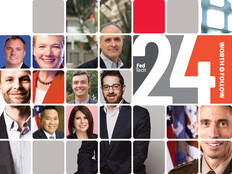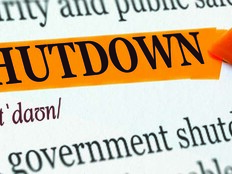How CIOs Are Approaching the Technology Modernization Fund
Congress appropriated $1 billion for the fund as part of the American Rescue Plan Act. In late September, the board announced $311 million in funding for projects, several of which revolved around zero-trust cybersecurity projects.
Agriculture Department CIO Gary Washington said that the TMF is a “wonderful vehicle” to help agencies modernize legacy systems. He also said it is useful for funding cross-agency projects. USDA is looking to partner with the Interior Department on fighting forest fires, for example, and the TMF could be used to modernize technology at Interior to do that. Such projects are more likely to get funding, he said, adding that Federal CIO Clare Martorana and Deputy Federal CIO Maria Roat have “done a great job” in promoting cross-agency collaboration.
Energy Department CIO Anne Dunkin reiterated her point of view that there isn’t enough money in the TMF to cover the wide range of IT modernization needs across the government, calling it a “down payment on what we need to do.” However, she praised the Office of Management and Budget and the General Services Administration for altering the TMF rules to consider funding projects that do not expect to yield enough savings to fully repay the amount they draw from the fund.
RELATED: What are the key challenges to federal digital transformation?
Labor Department CIO Gundeep Ahluwalia noted that his agency has received two awards from the fund since its inception, one to speed up and digitize the issuing of visas for temporary workers and another to defragment and modernize its data infrastructure. The agency has three proposals before the TMF board now, including one related to the cybersecurity executive order, one to build on the visa project and another on ensuring compliance on accessibility related to Section 508 of the Rehabilitation Act.
For the Section 508 project in particular, Ahluwalia noted that agencies face similar issues related to making technology accessible to all, and the hope is that the project could result in resources, tools and training to help other agencies. Labor is using funds from a variety of sources, he said, including funds appropriated by Congress, its working capital fund and TMF fund to spur modernization, calling it a “comprehensive funding strategy.”
Office of Personnel Management CIO Guy Cavallo noted that his agency still does not have a working capital fund, but he is hoping to set one up. As a result, OPM is more reliant on TMF funding. The agency just received an award for a zero-trust networking project and has five other proposals before the TMF board focused on modernizing legacy systems, which manage everything from hiring to health insurance and retiree benefits for federal employees.
The OPM technology budget on its own cannot support all of those modernization efforts, Cavallo said. “We need outside funding,” he noted, adding that he aims to move quickly on modernization efforts. “There is no sitting still or timing.”
Click the banner below to get access to a customized content experience and exclusive articles.













